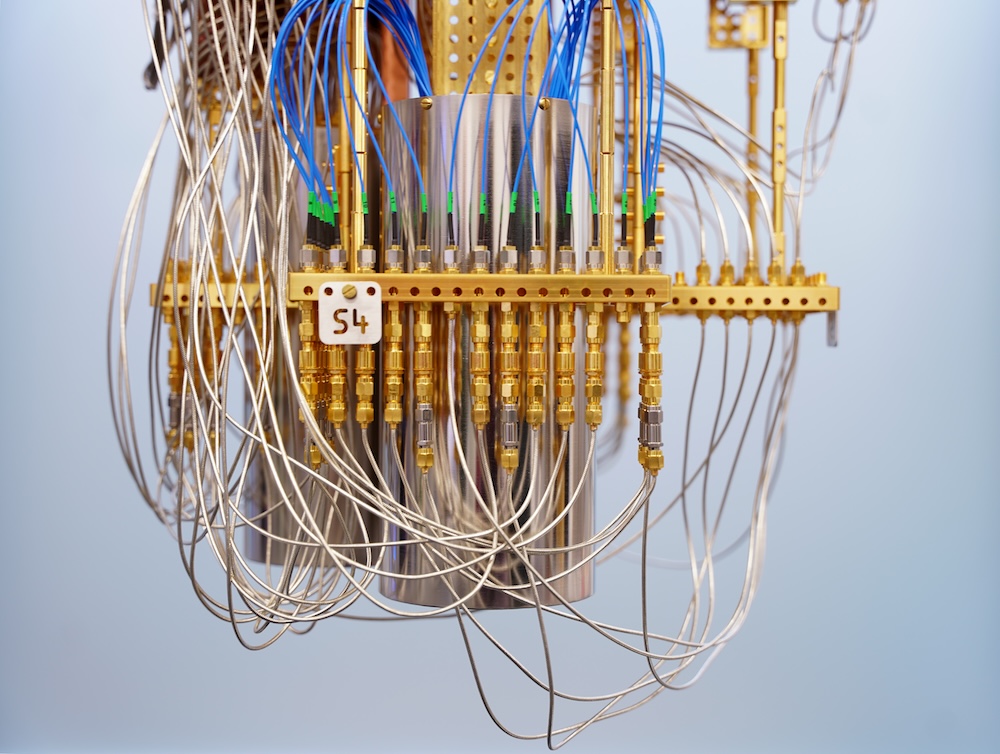Two Quantum Processing Units (QPU) based on superconducting materials have been installed at the Leibniz Supercomputing Centre (LRZ). One offers five quantum bits or qubits, the other 20. These central processing units of quantum computing are realised in superconducting circuits made of electrons and are stimulated by microwave pulses to change their state and entangle with each other in order to perform calculations. Quantum processors based on superconducting circuits are easy to operate, but like all quantum technologies, they are still susceptible to noise in the circuits. This in turn leads to inaccuracies in computing. Errors can also occur because physical characteristics of the hardware change over time: "There are no fault-tolerant quantum computers yet," says LRZ researcher Dr Xialong Deng. "All systems are classified as Noisy Intermediate Scale Quantum or NISQ systems because they are prone to significant error rates and, unlike classical computers, have no error correction."
Performance characteristics and automation
To ensure reliability and accuracy in computing, quantum computers must therefore be calibrated often: a complex, multi-stage process that is carried out manually in research laboratories. However, computing centres such as the LRZ are now making the first quantum technologies available to a wider user community and also want to test and use them as accelerators for high-performance computers. Lengthy adaptations are time-consuming and expensive in day-to-day operations. This is why the LRZ, in collaboration with the Technical University of Munich (TUM) and IQM Quantum Computers, the manufacturer of the two QPUs, has laid the foundations for the use of this future technology: "In addition to uniform standards for evaluating the performance of quantum computers, we have defined and established an automated process for calibration," reports Deng. "The results can be transferred to 20-qubit QPUs with superconducting circuits, and the general idea behind them also applies to quantum systems based on ion traps and neutral atoms." Such systems are also currently being researched at the LRZ so that scientists can work with them. The research results will be presented in a peer reviewed paper (Xiaolong Deng et al: Calibration and Performance Evaluation of a Superconducting Quantum Processor in an HPC Center) during the ISC High Performance Conference, which is taking place in Hamburg this year from 12 to 16 May.
Calculate, simulate, compare
The group first put the 5-qubit processor through its paces and described the coherence times, gate fidelity and readout fidelity using proven measurement values. These values indicate how long qubits remain stable, how reliably the quantum gates or operations are executed and, finally, the error rate in the results. In contrast to conventional computers, quantum systems do not work with electronic circuits and the values 0 and 1, but with quantum mechanical states and in multi-dimensional computing spaces. This allows more complex problems such as the modelling of molecules and proteins or the factorisation of large numbers to be solved more quickly. However, this future technology is still in the development phase and needs to be optimised for everyday use. "There is still no standardised method for calculating the overall quality of a quantum computer. We therefore defined standard quantum benchmarks in order to be able to evaluate the performance," explains LRZ researcher Deng. The QPU then completed the first known quantum algorithms, which were also run on one of the LRZ's quantum simulators for comparison.
The values obtained in this way now form the basis for the automated calibration process, as well as for error correction measures: if defined metrics fall below a certain limit, the calibration process is triggered. The working group programmed the necessary control measures using cron jobs in a Python script on a classical computer. "As the number of qubits increases, the calibration effort becomes more and more demanding," says Deng, citing his experience. The next steps will be to optimise the process for the 20-qubit QPU and transfer it to other quantum technologies.
More to read:
LRZ @ ISC: https://www.isc.lrz.de/
Qantum computing @ LRZ: https://www.quantum.lrz.de/de/bits-von-qubits/detail/quantum-computing-from-music-of-the-future-to-everyday-rhythm
Quantum Computer Metrics: https://ieeexplore.ieee.org/abstract/document/10313863
Integration quantum computing into HPC: https://www.quantum.lrz.de/de/bits-von-qubits/detail/quantencomputer-im-hoechstleistungsrechner-ein-whitepaper
Superconducting quantum computing: https://www.munich-quantum-valley.de/de/forschung/konsortien/sqqc
Ion trap quantum computing: https://www.quantum.lrz.de/de/bits-von-qubits/detail/quantensystem-auf-basis-von-ionenfallen-fuers-munich-quantum-valley
